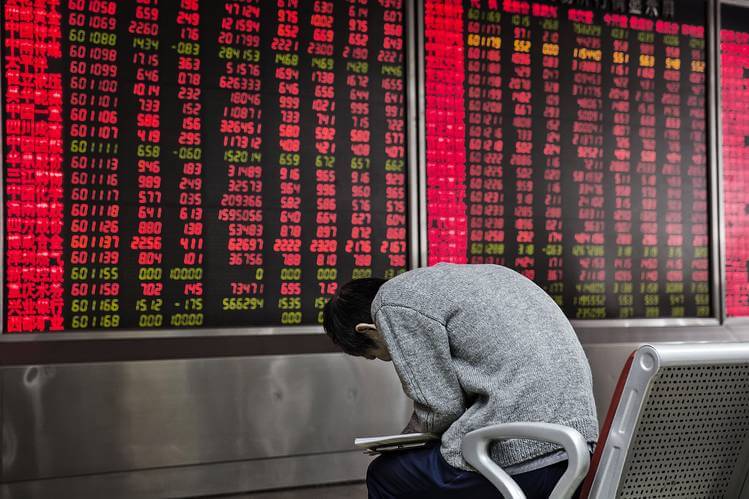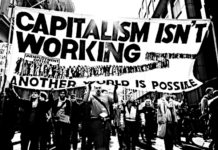Over three decades, the value of energy China extracts from its domestic oil, gas and coal supplies has plummeted by half
By Nafeez Ahmed
Sep 12, 2018
China’s economic slowdown could be a key trigger of the coming global financial crisis, but one of its core drivers — China’s dwindling supplies of cheap domestic energy — is little understood by mainstream economists.
All eyes are on China as the world braces itself for what a growing number of financial analysts warn could be another global economic recession.
In a BBC interview to mark the 10th anniversary of the global financial crisis, Bank of England Governor Mark Carney described China as “one of the bigger risks” to global financial stability.
The Chinese “financial sector has developed very rapidly, and it has many of the same assumptions that were made in the run-up to the last financial crisis,” he warned: “Could something like this happen again?… Could there be a trigger for a crisis — if we’re complacent, of course it could.”
Since 2007, China’s debts have quadrupled. According to the IMF, its total debt is now about 234 percent of gross GDP, which could rise to 300 percent by 2022. British financial journalist Harvey Jones catalogues a range of observations from several economists essentially warning that official data might not reflect how bad China’s economy is actually decelerating.
The great hope is that all this is merely a temporary blip as China transitions from a focus on manufacturing and exports toward domestic consumption and services.
Meanwhile, China’s annual rate of growth continues to decline. The British Foreign Office (FCO) has been monitoring China’s economic woes closely, and in a recent spate of monthly briefings this year has charted what appears to be its inevitable decline.
Last month, the FCO’s China Economics Network based out of the British Embassy in Beijing documented that China’s economy had “further softened… with indicators weakening across the board”.
The report found that: “Investment, industrial production, and retail sales all weakened, despite easing measures”; and noted that high-level Chinese measures to sustain economic growth were running out of steam.
China’s economic slowdown, moreover, coincides with brewing expectations that Wall Street’s longest running stock market bull run could be about to end soon.
One analysis of this sort came from Wall Street veteran Mark Newton, former Chief Technical Analyst at multi-billion dollar hedge fund Greywolf Capital, and prior to that a Morgan Stanley technical strategist.
Newton predicts that US stocks are close to peaking out, leading to a massive 40–50 percent plunge starting in the spring of 2019 or by 2020 at the latest. He explained that: “Technically there have started to be warning signs with regards to negative momentum divergence (an indicator that can signal a pending trend reversal), which have appeared prior to most major market tops, including 2000 and 2007.”
Newton’s forecast is similar to a prediction made by US economist Professor Robert Aliber of the University of Chicago Booth School of Business. Earlier this year, INSURGE reported exclusively on Aliber’s forecast of a 40-50 percent stock market crash (in or shortly after 2018), based on examining the dynamic of previous banking crises.
The vulnerability of both the US and Chinese economies — not to mention the string of other vulnerabilities in numerous other countries from Brexit to Turkey to Italy — demonstrates that whatever the actual trigger might be, the resulting impact is likely to have a domino effect across multiple interconnected vulnerabilities.
This could well lead to a global financial crash scenario far worse than what began in 2008.
But financial analysts have completely missed a deeper biophysical driver of China’s economic descent: energy.
Last October, INSURGE drew attention to new scientific study led by the China University of Petroleum in Beijing, which found that China is about to experience a peak in its total oil production as early as 2018.
Without finding an alternative source of “new abundant energy resources”, the study warned, the 2018 peak in China’s combined conventional and unconventional oil will undermine continuing economic growth and “challenge the sustainable development of Chinese society.”
These conclusions have been corroborated by a new paper published this February in the journal Energy, once again led by a team at the China University of Petroleum.
The study applies the measure of Energy Return On Investment (EROI), a simple but powerful ratio to calculate how much energy is being invested to extract a particular quantity of energy.
The team attempted a more refined EROI calculation, noting that standard calculations look at energy obtained at the wellhead compared to what is used to extract it; whereas a more precise measure would look at energy available at ‘point of use’ (so, after extraction from the wellhead, processing and transportation until it is actually used for something tangible in society).
Using this approach to EROI, the study finds that over a period of around three decades (between 1987 and 2012), the value of the energy extracted from China’s domestic fossil fuel base declined by more than half from 11:1 to 5:1.
This means that more and more energy is being expended to extract a decreasing amount of energy: a process that is gradually undermining the rate of economic growth.
A similar finding extends to China’s coal consumption: “In 1987, the energy production sectors consumed 1 ton standard coal equivalent (TCE) energy inputs for every 10.01 TCE of produce net energy. However, in 2012, this number declined to 4.25.”
The study uses this data to simulate the impact on China’s GDP, and concludes that China’s declining GDP is directly related to the declining EROI or energy value of its domestic hydrocarbon resource base.
But it isn’t just China experiencing an EROI decline. This is a global phenomenon, one that was recently noted by a scientific report to the United Nations that I covered for VICE, which warned that the global economy as a whole is shifting to a new era of declining resource quality.
This doesn’t mean we are ‘running out’ of fossil fuels — but it means that as the resource quality of those fuels decline, we increase the costs on our environment and systems of production, all of which increasingly impact on the health of the global economy.
As long as mainstream economic institutions remain blind to the fundamental biophysical basis of economics, as masterfully articulated by Charles Hall and Kent Klitgaard in their seminal book, Energy and the Wealth of Nations: An Introduction to BioPhysical Economics, they will remain in the dark about the core structural reasons why the current configuration of global capitalism is so prone to recurrent crisis and collapse.
* Dr. Nafeez Ahmed is the founding editor of INSURGE intelligence. Nafeez is a 17-year investigative journalist, formerly of The Guardian where he reported on the geopolitics of social, economic and environmental crises. Nafeez reports on ‘global system change’ for VICE’s Motherboard, and on regional geopolitics for Middle East Eye. He has bylines in The Independent on Sunday, The Independent, The Scotsman, Sydney Morning Herald, The Age, Foreign Policy, The Atlantic, Quartz, New York Observer, The New Statesman, Prospect, Le Monde diplomatique, among other places. He has twice won the Project Censored Award for his investigative reporting; twice been featured in the Evening Standard’s top 1,000 list of most influential Londoners; and won the Naples Prize, Italy’s most prestigious literary award created by the President of the Republic. Nafeez is also a widely-published and cited interdisciplinary academic applying complex systems analysis to ecological and political violence.











